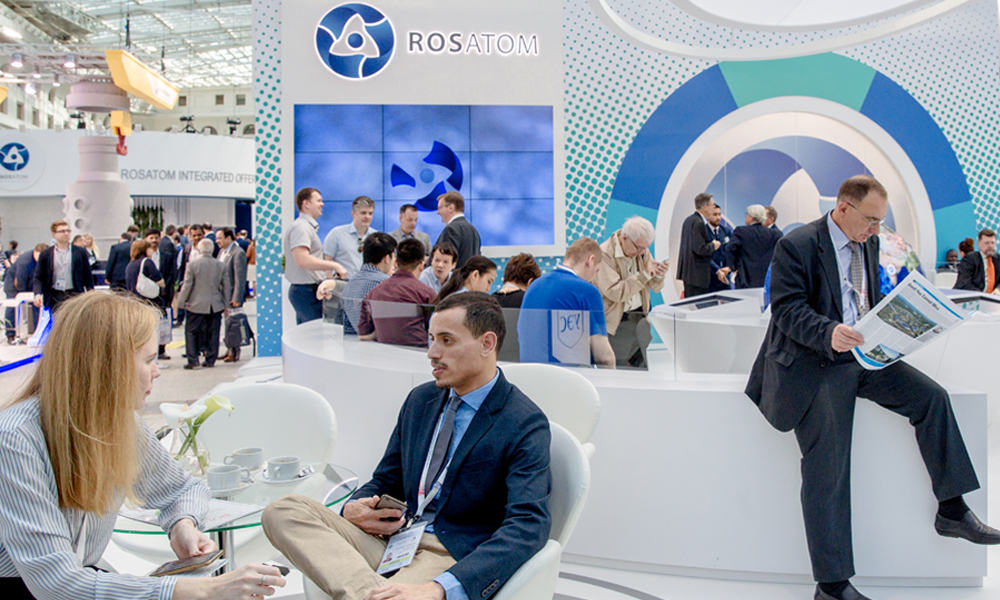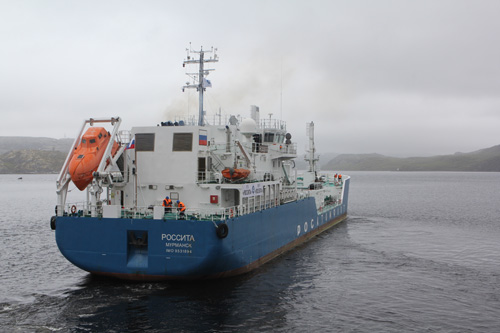
Rosatom’s Highlights 2017
back to contentsJanuary
New business development was Rosatom’s motto of the month. Its landmark event was the signing of a partnership agreement with Lagerwey, a Dutch wind farm manufacturer. This event marked the start of wind power projects in Russia. The foundation for them was laid in 2016 when Rosatom won the bid to construct three wind farms with a total capacity of 610 MW in the country. The Dutch company will transfer the manufacturing technology to Rosatom, with production to be set up at Atommash (Volgodonsk, Russia).
February
The third winter month was also full of momentous events for the Russian nuclear industry. And one of them was the start of commercial operation at the most advanced and powerful unit in the world. Unit 1 of Novovoronezh II became the world’s first operating Generation 3+ reactor.
Rosatom also won a contract for its new product, a nuclear science and technology center. In February 2017, Rosatom and Zambia agreed to build it in the country. The first contract to the same effect was signed between Rosatom and Bolivia in 2016.
Russia and Tajikistan signed an agreement on civil nuclear cooperation. The document was the first historical document signed between the two countries.
March
The first spring month brought Rosatom good news as the European Commission completed the investigation into Paks II construction project with Russia’s involvement and gave it a green light. The Commission stressed that the Hungary-based project was fully compliant with the EU competition law.
Construction of Bushehr Unit 2 started in Iran on 14 March.
April
India’s Kudankulam Unit 2 was transfered to the customer for warranty operation. The reactor unit will be tested for reliable performance under standard working conditions till 30 March 2018.
Rosatom and the IAEA agreed to jointly improve the nuclear infrastructure in emerging nuclear countries.
May
The last spring month was fruitful for Rosatom’s TVEL Fuel Company, which signed nuclear fuel supply contracts worth a total of 1 billion US dollars with two Chinese companies. The fuel is intended for Tianwan NPP Units 1 and 2 built with Russia’s input.
June
The first month of summer 2017 was packed with new contracts and conferences. One of the central events was the signing of a framework agreement for the third phase (Units 5 and 6) of the Kudankulam NPP construction project in India.
At Atomexpo 2017 held in Moscow, Rosatom made over 50 cooperation agreements and contracts. One of the most important was an agreement with Turkish investors joining the Akkuyu construction project.
Also in July, Yekaterinburg hosted an IAEA international conference on fast reactors. The event was attended by more than 500 experts from different countries.
 Rosatom and Vietnam agreed to establish a nuclear center in the country. A memorandum to this effect was signed by Rosatom and the Ministry of Science and Technology of Vietnam at the end of the month.
Rosatom and Vietnam agreed to establish a nuclear center in the country. A memorandum to this effect was signed by Rosatom and the Ministry of Science and Technology of Vietnam at the end of the month.
 The first batch of spent nuclear fuel was shipped from the repository at Andreev Bay for reprocessing. The shipment brought the end to 20 years of preparation for removal of spent fuel from the repository.
The first batch of spent nuclear fuel was shipped from the repository at Andreev Bay for reprocessing. The shipment brought the end to 20 years of preparation for removal of spent fuel from the repository.
July
At Expo 2017 in Kazakhstan, Rosatom organized the Nuclear Week devoted to Russian nuclear technologies. The event drew capacity audience. Rosatom’s exposition featured nuclear solutions for agriculture, medicine, water desalination, water treatment, space exploration, supercomputers, closed nuclear fuel cycle, superconductors, and thermonuclear fusion.
Construction of Kudankulam Units 5 and 6 entered the implementation stage. On 31 July 2017, AtomStroyExport and the Nuclear Power Corporation of India Limited signed contracts for project engineering, detailed design and delivery of core machinery for Kudankulam III.
August
The second project phase at Tianwan NPP passed a key milestone as the Unit 3 reactor startup began on 18 August.
Rosatom’s subsidiaries in Latin America also showed good results. Rosatom America Latina and UMATEX Group (Rosatom’s subsidiary for composite materials) became members of the Latin American Composite Materials Association (ALMACO). The membership in ALMACO offers new opportunities for Russian companies in Latin America.
ZiO-Podolsk completed the most complex task of assembling the first reactor vessel for the RITM-200 unit to be installed on Sibir (Siberia), a Project 22220 nuclear icebreaker.
September
In early autumn, Rosatom won another international contract. The company’s subsidiary Rusatom Healthcare and Thailand’s Kinetics Corporation Ltd will jointly construct and commission a center for production of radiopharmaceuticals in Thailand. The center is aimed to support the development of Thai nuclear medicine. Later Rosatom took another step forward by signing a contract with A Brown Company Inc. to construct a network of agricultural irradiation centers in the Philippines.
In the same month, Rosatom continued expanding its wind power business. The newly established SC NovaWind will consolidate Rosatom’s operations in the leading segments and technology platforms of the power industry.
In late September, the reactor of Tianwan Unit 3 achieved criticality, which marked the end of the startup phase. It is also notable that loading of all 163 fuel assemblies was completed ahead of the schedule.
Rosatom strengthened its ties with partners in Latin America and Southeast Asia. Cooperation agreements were signed with Paraguay and Cambodia at the IAEA General Conference
The contract to construct a nuclear research center in Bolivia was signed in September at the IAEA General Conference in Vienna between Rosatom and the Bolivian Atomic Energy Agency. The center will have a 200 kW pressurized water reactor, a multi-purpose gamma irradiation unit, a cyclotron for pharmacological purposes, auxiliary facilities, and several research laboratories. Investments in the project will exceed 300 million US dollars.
The float-out ceremony for Sibir (Siberia), the first Project 22220 nuclear icebreaker, was held on 22 September. It took the Baltic Shipyard only two years and a half to prepare Sibir for the float-out.
October
Rosatom’s irradiation technologies were in demand in the second autumn month, too. A memorandum on cooperation was signed with Morocco’s CMI Développement to build irradiation centers and supply isotope products to the country’s health care institutions.
Construction operations finally began at Bushehr II. According to the contract signed in November 2014, Russia will construct two new reactors with a total capacity of 2,100 MW near the existing unit.
Russia and Nigeria signed a set of agreements on construction and operation of a nuclear power plant and a multi-purpose research reactor in Nigeria. The two countries also signed a road map to jointly promote peaceful uses of nuclear power.
November
One of this month’s landmark events was the beginning of Rooppur NPP construction in Bangladesh as the first concrete was poured in late November. The station will comprise two 1,200 kW VVER-based power units built to AES-2006 Generation 3+ design offering improved efficiency and compliance with the latest reliability and safety requirements.
December
Rosatom continued setting records in the run-up to New Year’s Day. For the first time in the history of modern Russia, two reactors – one at Leningrad II and the other at Rostov NPP – were started up within a single week. Another notable event was the beginning of construction at Akkuyu in Turkey. As specified in the limited construction permit, which is the first license obtained last October, Rosatom will start building the so called non-nuclear structures and facilities for the station.
This year’s most anticipated event in international cooperation was the signing of contracts to construct a nuclear station in El Dabaa and supply nuclear fuel for its reactors.




